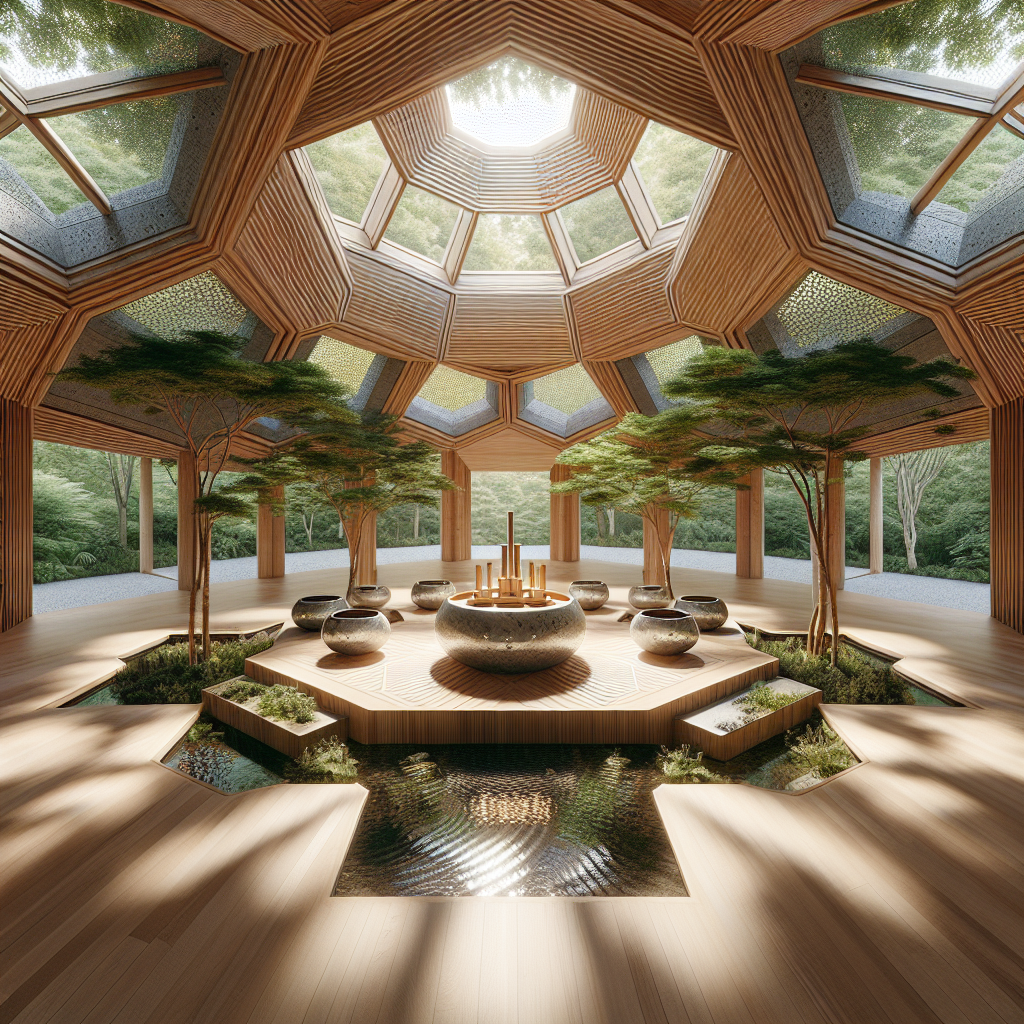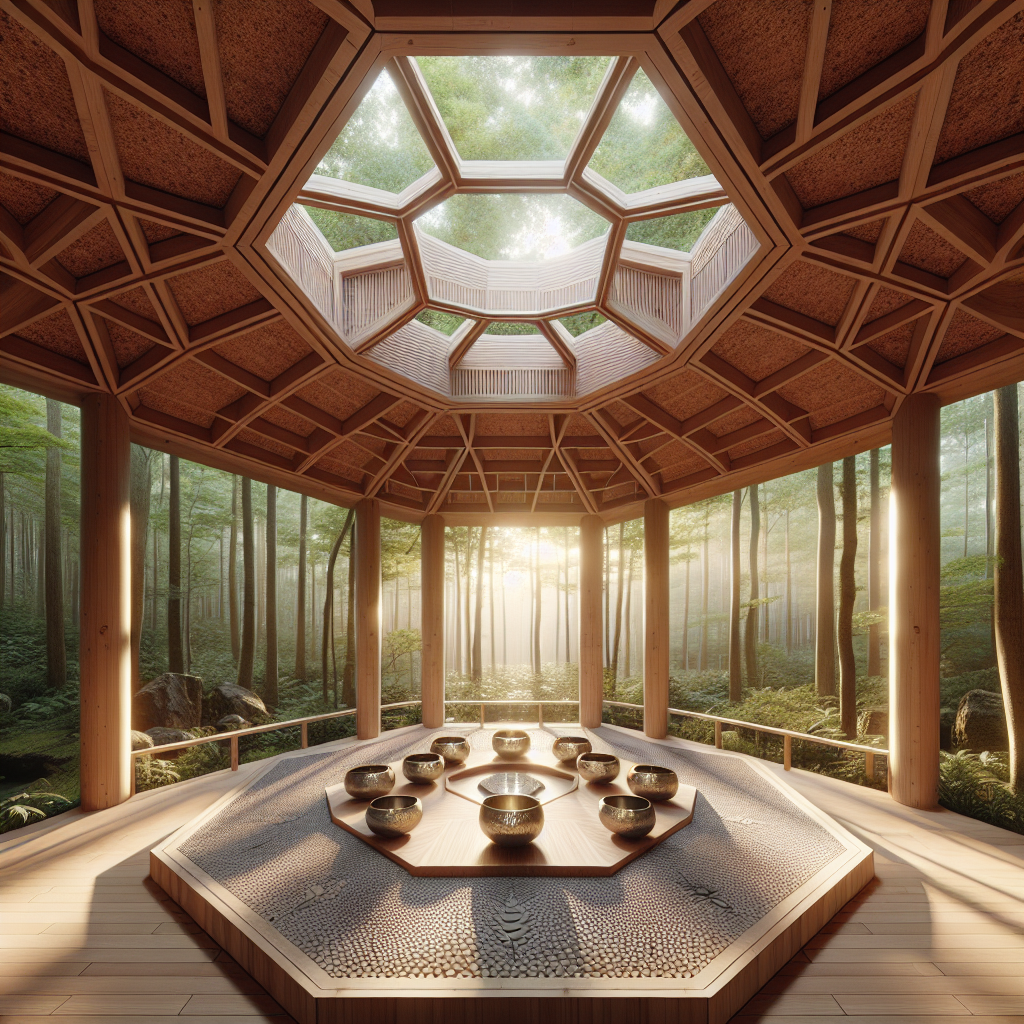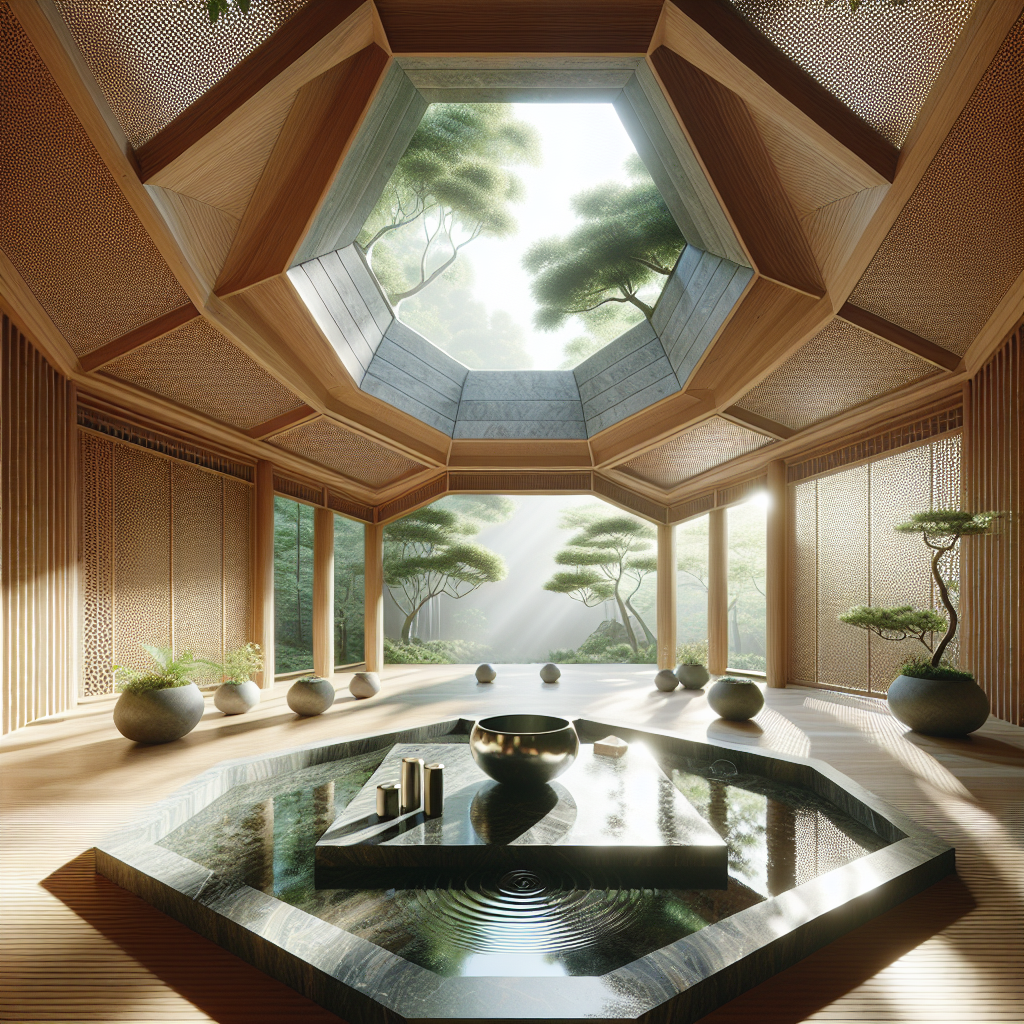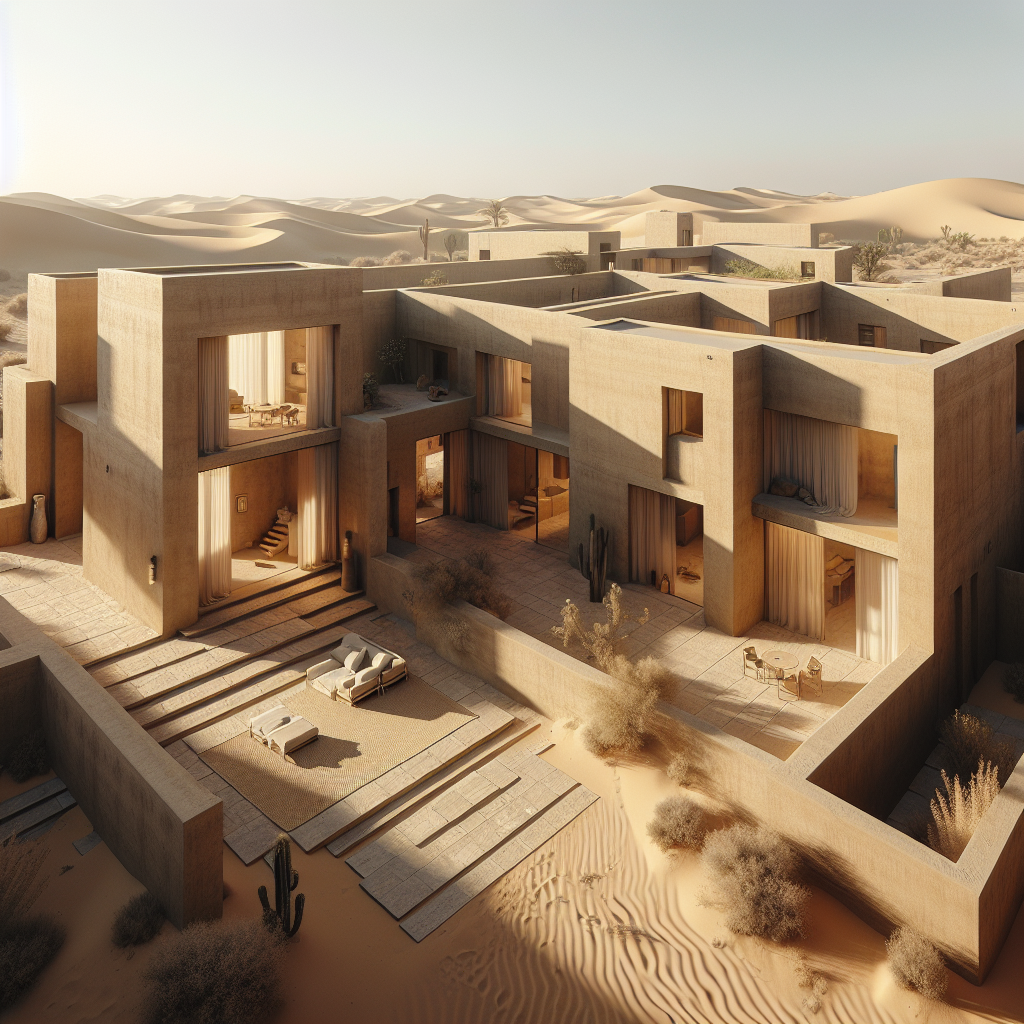Architecture of calm: polygonal meditation spaces with integrated sound baths

Architecture of Calm: Polygonal Meditation Spaces with Integrated Sound Baths
In the relentless rhythm of urban life, architects and designers are increasingly turning towards creating spaces that foster tranquility, mindfulness, and emotional rejuvenation. Among the most captivating trends emerging in contemporary architecture is the innovative fusion of polygonal meditation spaces with integrated sound baths. These thoughtfully designed sanctuaries, characterized by their geometric precision and acoustic excellence, offer an immersive experience that harmonizes spatial aesthetics with holistic wellness.
Polygonal Forms: Geometry as a Gateway to Serenity
Polygonal architecture, distinguished by its angular shapes and multifaceted surfaces, has long captivated designers due to its visual dynamism and structural efficiency. Today, architects are harnessing the psychological and aesthetic potential of these geometric forms to craft spaces that inherently evoke a sense of calm and introspection. Unlike traditional rectangular or circular meditation rooms, polygonal spaces offer an intriguing interplay of light and shadow, enhancing sensory perception and deepening the meditative experience.
The use of polygons in meditation architecture draws inspiration from sacred geometry, a discipline that attributes symbolic and spiritual significance to geometric shapes. According to sacred geometry, specific forms such as hexagons, pentagons, and octagons resonate with natural patterns found throughout the universe, from molecular structures to celestial arrangements. By integrating these forms into meditation spaces, architects tap into an innate human affinity for harmony and balance, facilitating a deeper connection between occupants and their environment.
Sound Baths: Acoustic Alchemy in Architectural Design
Sound baths, an ancient practice involving immersive auditory experiences designed to induce deep relaxation and meditative states, have experienced a significant resurgence in recent years. Typically employing instruments such as crystal singing bowls, gongs, and chimes, sound baths utilize harmonic vibrations to soothe the nervous system, reduce stress, and promote emotional healing. Recognizing the profound impact of acoustics on human well-being, architects are now seamlessly integrating sound bath elements into polygonal meditation spaces, creating environments that are as acoustically resonant as they are visually striking.
The meticulous design of these spaces involves careful consideration of acoustic materials, spatial proportions, and sound diffusion techniques. Architects often employ materials such as natural wood, cork, and acoustic plaster to enhance sound absorption and diffusion, ensuring optimal resonance and clarity. Moreover, the polygonal geometry itself plays a pivotal role in shaping the acoustic environment, with angled surfaces strategically directing sound waves to envelop occupants in a cocoon of harmonious vibrations.
Case Study: The Polygonal Sanctuary at Tranquil Nexus, Kyoto
One exemplary manifestation of this architectural philosophy is the Polygonal Sanctuary at Tranquil Nexus, located in the serene outskirts of Kyoto, Japan. Designed by renowned architect Yumi Takahashi, this meditation pavilion embodies the fusion of geometric elegance and acoustic innovation. The sanctuary’s octagonal form, constructed primarily from sustainably sourced cedar, is punctuated by expansive skylights that bathe the interior in diffused natural light, enhancing the contemplative ambiance.
Inside, the pavilion’s interior walls are clad in meticulously crafted acoustic panels, designed to optimize sound resonance during meditation sessions. At the center of the space, a circular arrangement of crystal singing bowls rests upon a polished stone platform, inviting visitors to partake in immersive sound bath experiences guided by skilled practitioners. The interplay between the polygonal architecture and acoustic design creates an environment where visitors effortlessly enter deep states of relaxation and mindfulness.
Holistic Integration: Biophilic Elements and Technological Innovations
The integration of polygonal meditation spaces with sound baths often extends beyond geometry and acoustics, incorporating elements of biophilic design and cutting-edge technology. Biophilic design principles, which emphasize human connection to nature, are frequently employed to enhance the therapeutic qualities of these spaces. Architects introduce elements such as indoor gardens, water features, and natural ventilation systems, further enriching the sensory experience and promoting emotional well-being.
Technological advancements also play a crucial role in elevating the meditation experience. Smart lighting systems, adaptive acoustics, and augmented reality interfaces enable personalized meditation journeys tailored to individual preferences and emotional states. For instance, adaptive acoustic systems can modulate sound frequencies in real-time, responding dynamically to the physiological responses of occupants, thus optimizing relaxation and mindfulness outcomes.
Global Trends and the Future of Polygonal Meditation Spaces
The rising popularity of polygonal meditation spaces with integrated sound baths reflects broader societal shifts towards holistic wellness and mindfulness practices. As urban populations grapple with increasing stress levels and mental health challenges, architects and designers are responding by creating environments that prioritize emotional restoration and spiritual nourishment.
According to recent studies, meditation and sound therapy have demonstrated measurable benefits in reducing anxiety, improving cognitive function, and enhancing overall quality of life. This empirical evidence underscores the significance of architectural innovations that facilitate these practices, positioning polygonal meditation spaces as essential components of contemporary urban design.
Moreover, as sustainability becomes an imperative in architectural practice, designers are increasingly employing eco-friendly materials and construction techniques in these spaces. The rise of timber construction, biodegradable materials, and energy-efficient technologies aligns seamlessly with the ethos of mindful architecture, further amplifying the environmental and social impact of these spaces.
Inspiration from the Past, Vision for the Future
The concept of designing spaces specifically for meditation and sound therapy is not entirely new; historical precedents can be found in ancient temples, cathedrals, and sacred sites around the world. For instance, medieval European cathedrals were meticulously designed to enhance acoustic resonance, creating profound spiritual experiences for worshippers. Drawing inspiration from these historical examples, contemporary architects are reinterpreting traditional principles through innovative geometric forms and modern acoustic technologies.
As we look towards the future, the evolution of polygonal meditation spaces promises to continue pushing the boundaries of architectural creativity and holistic wellness. Emerging technologies such as augmented reality, virtual reality, and artificial intelligence hold immense potential for further enhancing the immersive qualities of these spaces, enabling unprecedented levels of personalization and interactivity.
Ultimately, the architecture of calm represents a profound convergence of aesthetics, acoustics, technology, and spirituality. By thoughtfully integrating polygonal geometry with sound bath experiences, architects are crafting sanctuaries that not only captivate the senses but also nurture the soul, offering a much-needed respite from the complexities of modern life.
Conclusion: Crafting Sanctuaries for the Modern Soul
In an era marked by rapid urbanization and technological acceleration, the emergence of polygonal meditation spaces with integrated sound baths signifies a compelling architectural response to humanity’s enduring quest for tranquility and emotional well-being. These spaces embody a harmonious synthesis of form, function, and sensory experience, reflecting a deeper understanding of the profound impact that our built environments have on our mental and emotional states.
As architects and designers continue to explore the possibilities of polygonal geometry, acoustic innovation, and biophilic integration, we can anticipate a future where urban landscapes are enriched by sanctuaries of calm, designed to nurture mindfulness, inspire introspection, and elevate the human spirit.
For further insights into innovative architectural trends, explore our articles on zero-waste architecture and vertical gardens.
For more information on sound therapy, visit Wikipedia’s comprehensive guide.








